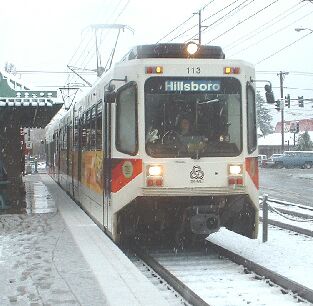
Light Rail Now/Light Rail Progress can be contacted at: Light Rail Now! |
December 2004 The latest available data on the growth rate of transit ridership in the USA and Canada shows that rail transit, among all transit modes, continues to lead in the growth rate of its ridership – while ridership on buses and "exotic" transit modes like cable cars, monorails, and automated guideways (AGT) shows a decline. Railway Age of December 2004 tabulated the transit ridership data for the first half (quarters 1-2) of 2004 (I have calculated percentages more accurately where the magazine article just rounded to zero percent). The complete tabulation is shown in the table and graph below. Of particular interest is the fact that light rail transit (LRT) leads in ridership growth, both among rail transit modes and in the entire industry. Ridership Growth or Loss Rate USA & Canada, Quarters 1-2, 2004
Total rail and bus ridership are compared in the table and graph below. Ridership: Rail Growth vs. Bus Loss Rate USA & Canada, Quarters 1-2, 2004
According to the Railway Age tabulation, actual ridership totaled 4.7 billion for just half a year. Canada added almost a billion with its higher riding habit. Ridership growth rates for the USA and Canada are compared in the table and graph below. Ridership Growth: USA vs. Canada USA & Canada, Quarters 1-2, 2004
It should be noted that electric trolley coaches showed a significant decline because Philadelphia's SEPTA agency shut down its services. It's also noteworthy that even adding the Silver Line "BRT" in Boston (supposedly, the city's "newest rapid transit line") has not seemed to have helped boost the bus ridership data significantly. Light Rail Now! website | ||||||||||||||||||||
|
|
|||||||||||||||||||||